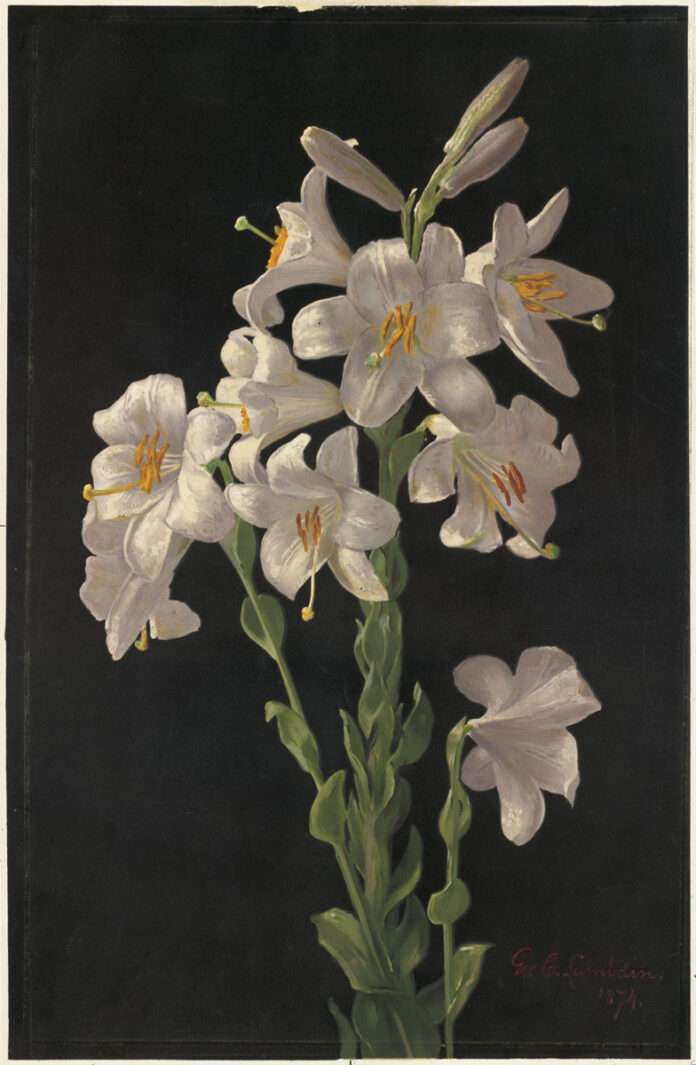Holiday favorite can continue to grow outside with proper care
MANHATTAN, Kan. – Easter lilies, a traditional holiday symbol of hope and purity, may not yet be done for the year.
Kansas State University horticulture expert Ward Upham said that although Easter lilies are not reliably hardy in Kansas, a few simple steps can give them a chance to survive outdoors.
Those include:
• After the flowers have faded, remove the flower stalk so that the plant’s energy doesn’t go toward making seed.
• Keep the plant inside until the danger of frost is past. Keep soil moist, but never waterlogged. Don’t allow water to sit in the tray. Continue to fertilize.
• The pot can be moved outside when frost is no longer a concern. Sinking the pot into the soil up to the brim and placing in dappled shade will help reduce watering. Continue to water and fertilize until the top growth dies down.
• Choose a sunny, well-drained spot for planting. Good drainage is vital for lilies, so the addition of organic matter is usually necessary for most soils. Till or dig the soil six inches deep and add three inches of peat moss. Mix the soil and peat moss together. This will form a berm that should drain very well.
• Plant the bulbs 6 inches deep and 12 to 18 inches apart and water well. Mulch to conserve moisture. New growth may appear later in the summer or the plant may stay dormant until the following spring.
• Cover the plants in the fall after the foliage has died down with straw, pine needles, wood chips or other types of mulch to help protect the plant over winter. Use four inches of straw or three inches of any of the other materials.
• Uncover the plants in the spring to allow new growth to appear, and fertilize according to results of a soil test.
To help gardeners and others maintain their home landscapes, Upham and his colleagues in K-State’s Department of Horticulture and Natural Resources publish a weekly Horticulture Newsletter. The newsletter is available to view online or can be delivered by email each week.
Interested persons can also send their garden- and yard-related questions to Upham at wupham@ksu.edu, or contact your local K-State Research and Extension office.
FOR PRINT PUBLICATIONS: Links used in this story
K-State Department of Horticulture and Natural Resources, https://hnr.k-state.edu
K-State Horticulture Newsletter, https://hnr.k-state.edu/extension/info-center/newsletters/index.html
K-State Research and Extension local offices, www.ksre.k-state.edu/about/stateandareamaps.html
K State Research and Extension is a short name for the Kansas State University Agricultural Experiment Station and Cooperative Extension Service, a program designed to generate and distribute useful knowledge for the well being of Kansans. Supported by county, state, federal and private funds, the program has county extension offices, experiment fields, area extension offices and regional research centers statewide. Its headquarters is on the K State campus in Manhattan. For more information, visit www.ksre.ksu.edu. K-State Research and Extension is an equal opportunity provider and employer.
Story by:
Pat Melgares
785-532-1160
melgares@ksu.edu
For more information:
Ward Upham
785-532-6173
wupham@ksu.edu





